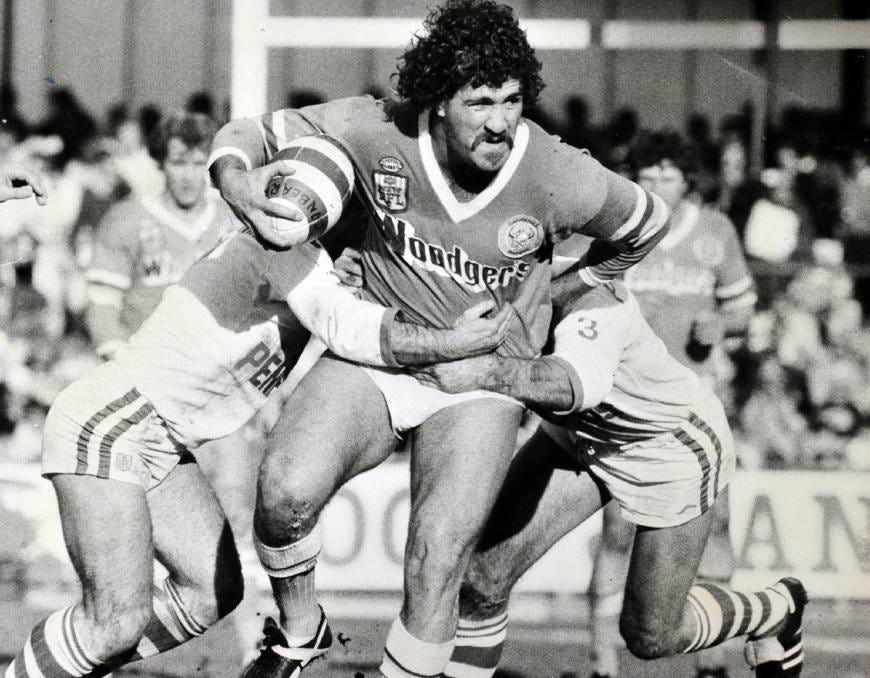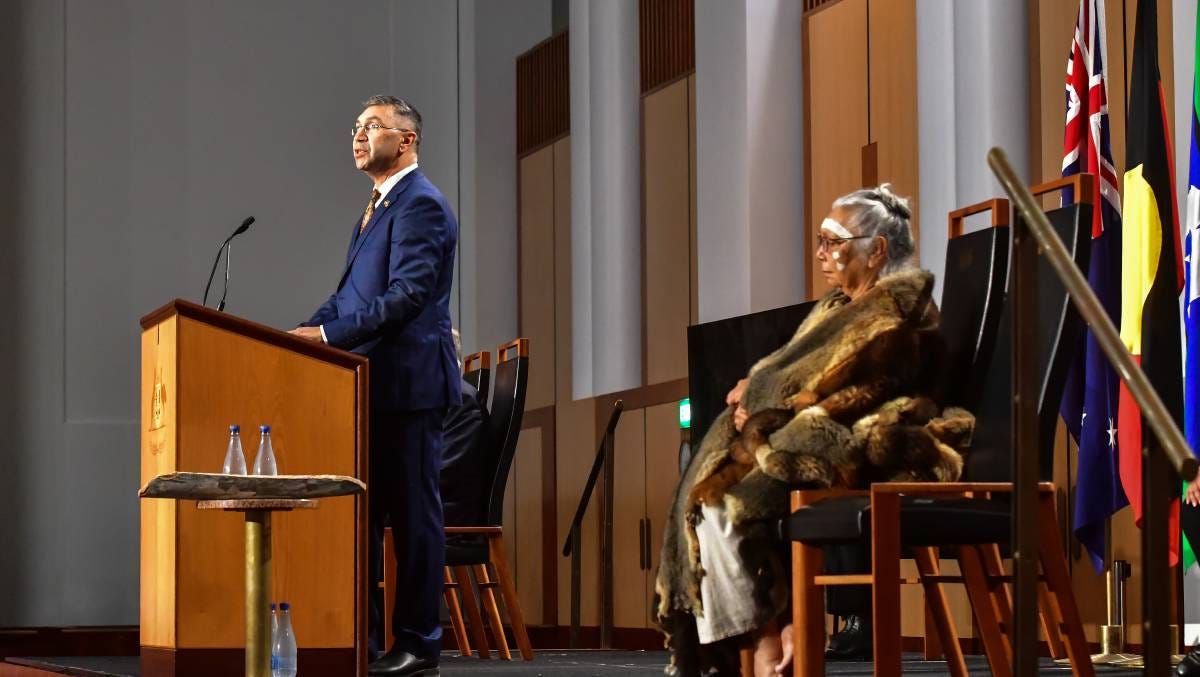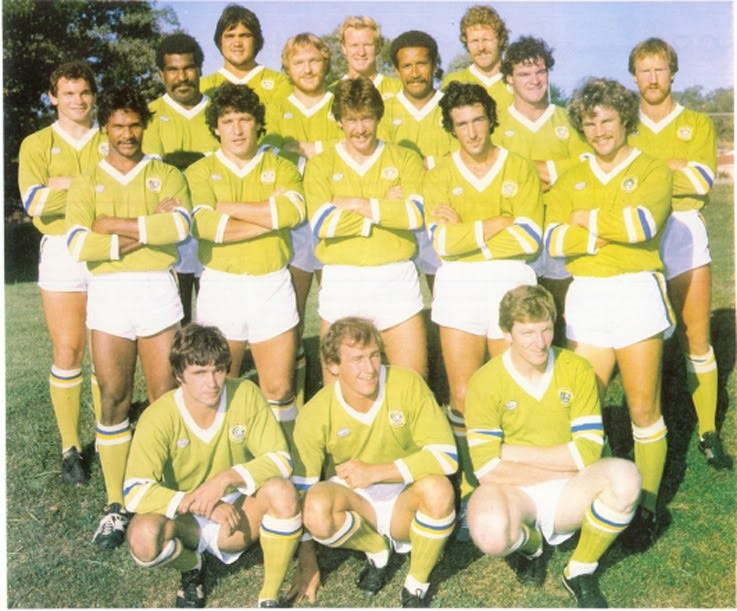Ngambri Raiders: Why Ngunnawal isn't Canberra's full story, according to Paul 'Harry' House
In an edited extract from Matt Cleary's 40-year history book 'The Milk', Indigenous leader Paul 'Harry' House says until the club acknowledges they're on Ngambri land the club won't know true success
Outside Brad Clyde, who was a freak, a great thundering golden horse, the best U/18 footy player in Canberra in 1987 was Phillip College five-eighth Paul ‘Harry’ House. Gee he was good. Tall, skilful, quick enough, tough, he seemed to glide around the field. Big step, soft hands, time. He was even good looking, the bastard. Slayed ‘em, Harry.
He played SG Ball and Jersey Flegg for the Raiders and would’ve surely gone on to do famous, on-TV things like Clyde and another Phillip College kid, Nigel Gaffey, but he didn’t turn up to a grading day for U/21s and no-one really chased him up. That’s just how things rolled then, probably still do now. If you don’t want it, kid, there’s plenty who do.
House would play for Boomanulla Warriors, Bogong Warriors, Koori United. He was a 16-year-old playing against men. He played for Boomanulla with my mate Mark Huddleston and his brother Dale Huddleston who played reserves for the Raiders and could run very fast, and a big husky kid from Queanbeyan called Glenn Lazarus, in with the Warriors by dint of an Indigenous girlfriend and because he was very, very good.

House went by ‘Housie’ or ‘Harry’ after his middle name Harold and his great-great-grandfather, Ngambri–Walgalu man Henry ‘Black Harry’ Williams, born in Namadgi in 1837.
On the other side there’s Ngunnawal–Wallaballoa man Murjinille aka William Lane aka ‘Billy the Bull’ who lived around Yass.
How good – Blacky Harry and Billy the Bull as relatives.
House’s grandad Doug Williams went by ‘Harry’, too, and played for Yass Magpies when they won Group 8 in 1948. And his mum is Doctor Aunty Matilda who was protesting for Indigenous rights in 1963 and hasn’t let up since.
When Charlie Perkins came to town he was welcomed by Matilda House. Same thing happened to Sam Backo, Percy Knight, Ray Blacklock and Terry Wickey. She welcomed Kevin Rudd and sat front row the day he said sorry on behalf of Australia.

House says he doesn’t remember a time not being around ‘politics’. He also doesn’t remember a life without rugby league.
As a little fellow he’d be in the sheds when the men were warming up. He remembers the largeness of them, the hairs on their legs, the coarse language, the Vaseline, the smell of liniment. Though it wasn’t only that filling the air, according to House.
“It was serious stuff, the tension was thick. It was like they were going to war. On the field, they often went the knuckle. You didn’t take these fellas on that way. They were known for it,” House says.
House says the footy field was where the Warriors earned – and gave - respect. “I remember a game, one of our guys decked a bloke behind the play, thought he’d got away with it. At half-time there was a square-up – our guy was decked. But it didn’t go any further. It was understood. It was fair enough. There was mutual respect – at least on the footy field,” House says.
Being part of a football club meant that Koori folk who’d come from across Australia, often to work in the public service, felt a sense of belonging, acceptance and responsibility to each other. The camaraderie was created by “an inclusive approach in an exclusive society,” according to House who says it was ingrained in people not to trust government, police – authority in general.
“People had mutual respect because they’d all tolerated the same bullshit. Rugby league was a way to vent a bit of frustration,” House says.
House today remains at war, though peacefully. Like his mum, he’s been described as an ‘activist’, a bit like Australian of the Year Grace Tame has been by politicians and their media barrackers after going after ‘their’ guys, ‘their’ team, ‘their’ ideology.
House and Ms Tame would agree: bump against power, disturb the established hegemony with noise and ‘hard truth’, and power will bump back - even if you’re an advocate for an end to racism or the sexual exploitation of children.
On March 6th in 1982 House was an 11-year-old dangling his legs over a brick wall at the front of the Seiffert Oval grandstand when the Raiders played their first game at home, a 33-4 loss against Western Suburbs Magpies.
House, like me, remains a Raiders fan today. But first and foremost, he’s a Ngambri man. And very much a son of Matilda. And he’d like to tell Canberra and its Raiders this: “While ever the Ngambri people and country are not recognised, all ACT sporting entities, up to and including the Raiders, rob themselves of voice, treaty, truth telling - and sporting prosperity.”
*
When you wind up and out of the 110km zone around Lake George and cross the northern border line between NSW and ACT you’ll see a sign welcoming you to Ngunnawal country. Which is true enough but not the whole truth, according to our man the Ngambri man Paul ‘Harry’ House.
“When the first white settlers and pioneers came to the Canberra area they asked the local people, ‘What’s the name of this place?’ They were told ‘Ngambri’, which means to sleep, to camp, to lie down. It’s also the name of the people who were camped and living there. Ngambri became ‘Kamberri’, ‘Canberry’, ‘Canberra.’”
Mr JJ Moore created Canberry Station and sent tales ‘home’ to England of ‘pioneer’ life. They later built Royal Canberra Hospital on the site. In ’97 they blew it up. Today the National Museum of Australia sits there. House welcomed people when it was opened. I took my kids to the Museum and showed them the big photo of ‘Ngambri man Paul House’ with a didgeridoo.
House says the Ngambri are the traditional folk who held sway in the region. Their major corrobboree grounds were in the basin that’s now under the water of Lake Burley Griffin. House says his ancestors like ‘Billy the Bull’ come from north of Canberra. It’s his mother’s country – Yass, Gunning, Binalong, Bowning, Boorowa. There’s a suburb called Ngunnawal in the northern district of Gungahlin.
On the NRL’s website it says GIO Stadium is “Home of the Ngunnawal People”. House would like to see the Raiders, as the local footy club with a “rich powerful Aboriginal history”, and so many great Indigenous players, lead the conversation. He wants to link the Ngambri’s story with the Raiders’.
“There’s an open invitation for the Raiders to be known as the ‘Ngambri Raiders’ during the annual Indigenous Round and beyond, embracing the historical truths of country based on oral history and ethnohistorical records and evidence.
“So many Indigenous people have come to join the Raiders family. And so many people from around the world. ‘Ngambri’ means place to camp, to lie down,” House says, adding that should the Canberra Raiders become Ngambri Raiders in future Indigenous rounds the club “will see real success through acknowledgement, respect and honour of our country and people.
“We have a powerful and compelling story and it can underpin and reflect the Raiders’ story as well. This story needs to be shared with everyone, embraced by everyone. It’s a story that needs to be told,” House says.






